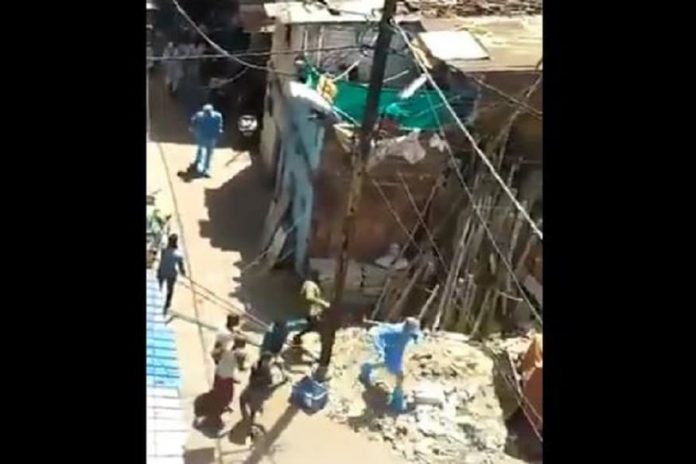
In recent days, there have been shocking instances of violence against doctors and healthcare workers—the Corona Warriors—as they performed their duty in trying times. Videos of healthcare workers being attacked as they went to collect samples from suspected cases or while taking care of these patients in hospitals are a sad testimony to the fear and ignorance of those who don’t want to be isolated in case they are Covid-19 positive. All these incidents finally led the government to amend the Epidemic Diseases Act, 1897.
Dr KK Aggarwal, president, Heart Care Foundation of India, and President elect, Confederation of Medical Associations of Asia and Oceania, rightly said in an article: “If doctors and other healthcare staff are under constant threat, they will not be able to treat patients. If nothing is done immediately to curb this, a time will come when there will be very few doctors. As of now, even the brightest students prefer non-clinical practice.”
While the violence against healthcare workers who are risking their lives is an eye-opener, such assaults have taken place in the past too. An ongoing study by the Indian Medical Association (IMA) reports that 75 percent of doctors in India have faced violence at some point of time in their lives, and mostly it is verbal abuse.
After much persuasion, in 2015, under pressure from the IMA, the government constituted a committee to examine this issue of violence. The report of the committee, finalised on March 23, 2017, recommended the following measures:
- The ministry of health shall suggest to all states which do not have specific legislation to protect doctors/health professionals to consider enacting one.
- The ministry shall write to all states to strictly enforce the provisions of the special legislation wherever it exists and/or enforce the IPC/CrPC provisions with vigour.
- The ministry shall explore the possibility of initiating the process to bring a central act on the issue in line with those in vogue in some states.
However, nothing came of these recommendations as the government did nothing. This has exposed these workers to real physical danger in these times. Acting on the violent incidents, the IMA wrote to its state presidents, local branch presidents, past national presidents, national office-bearers and CWC members that they demand a central law by ordinance against violence on doctors, nurses and healthcare workers.
The IMA letter said: “Our legitimate need for safe workplaces has to be met. Abuse and violence should stop immediately. Doctors and medical professionals across the country will light a candle at 9 pm on April 22 as a protest and vigil against the violence and abuse. The next day, doctors across the country will work with black badges and declare it a ‘Black Day’ if the government fails to enact a central law on violence against doctors and hospitals.” It also stated: “The IMA has maintained utmost restraint and patience despite extreme provocation. Doctors have been abused, beaten up, denied entry, and residence. Obstruction to cremation is the last straw that the IMA can bear.” It also considered the incidents to be a white alert for the medical fraternity.
A recent PIL filed by Nagpur based doctor Jerryl Banait led a Supreme Court bench led by Justice DY Chandrachud to seek the centre’s response on April 1 regarding the availability of WHO-approved protection gear for all health workers not only in metros but also in Tier-2 and Tier-3 cities. The petition said: “In the case, where the hospitals and health centers are not provided WHO standardised masks and gowns, medical staff mortality will exponentially increase and the situation will spiral out of control in the absence of sufficient medical assistance.” It sought hazmat suits and personal protective equipment, including sterile gloves, starch apparel, medical masks, goggles, face shields, respirators, shoe covers and coveralls to all health workers. This included doctors, nurses, ward boys and other medical and paramedical professionals treating these patients.
On April 8, the Court gave an observation on certain incidents of violence against doctors. One of these took place on April 2 in Indore’s Tatpatti Bakhal area where medical staff which had gone to screen some people for coronavirus was attacked and stones pelted on them. Another incident took place in Ghaziabad where some patients misbehaved with medical staff.
The Court directed: “The Government of India, respective States/Union Territories and respective Police authorities are directed to provide the necessary Police security to the Doctors and medical staff in hospitals and places where patients who have been diagnosed COVID-19 or patients suspected of COVID-19 or those quarantined are housed. Necessary Police security be also extended to Doctors and other medical staff who visit places to conduct screening of people to find out symptoms of disease.”
Finally on April 22, the government cleared an ordinance that was aimed at ending such attacks and amended the Epidemic Diseases Act, 1897. This made such acts of violence as cognizable and non-bailable offenses and provided compensation for injury to healthcare service personnel or for causing damage or loss to property. The ordinance will help protect healthcare personnel and their living/working premises against violence.
While talking to India Legal, a doctor who did not wish to be identified, said: “It is disheartening to watch such discrimination. Several doctors have been tested positive and it is not a point to prove how tough our job is. I hope the amendment brings some positive change in the situation.”
An attack on doctors will create a severe dent in the fight against Covid-19.
Lead Picture: By News18.com

